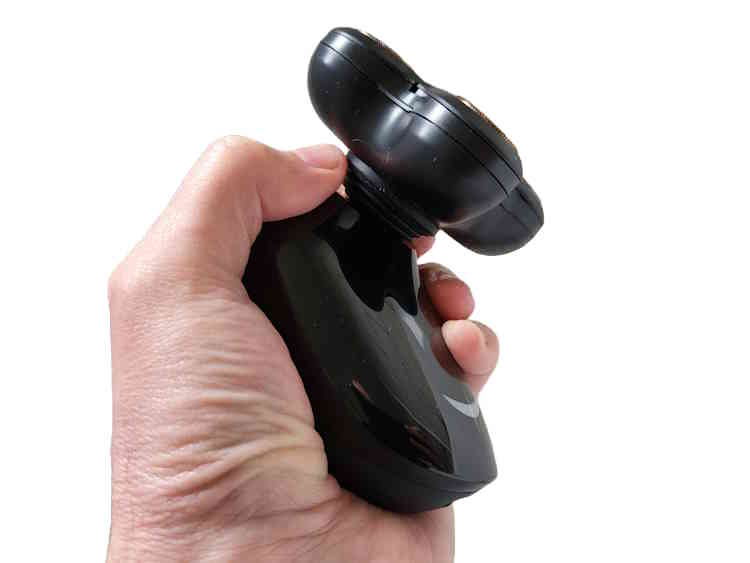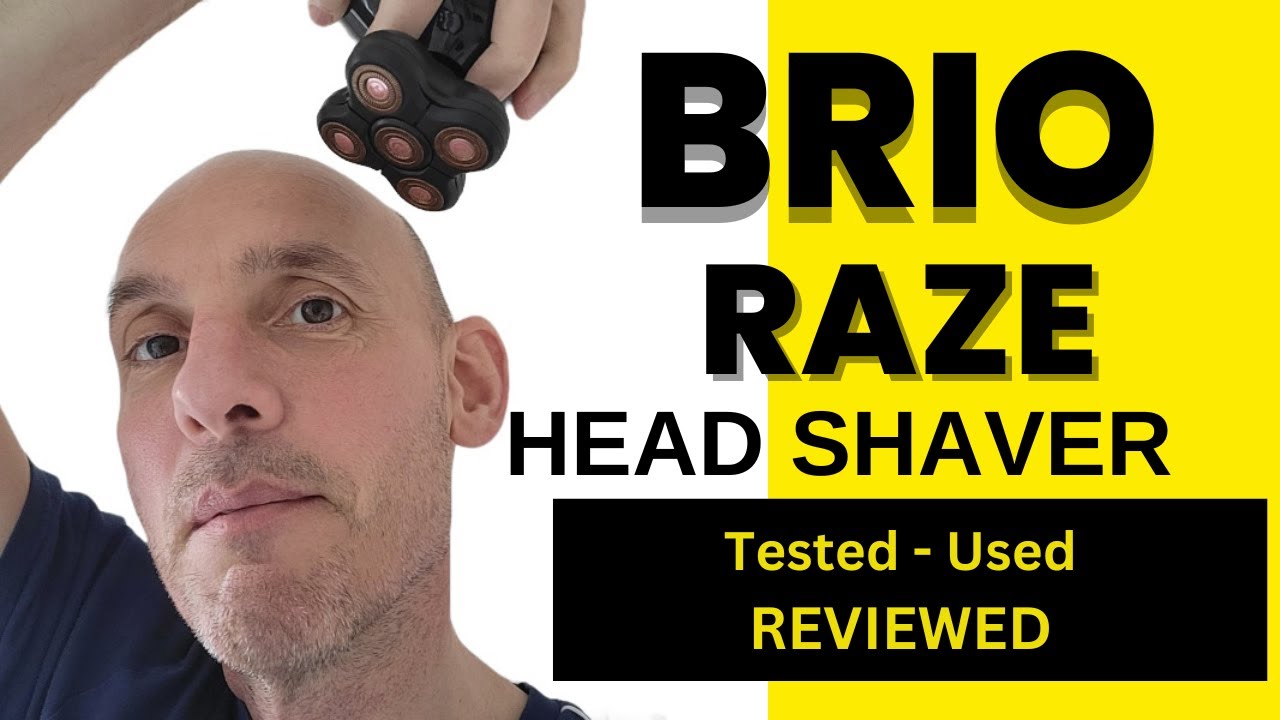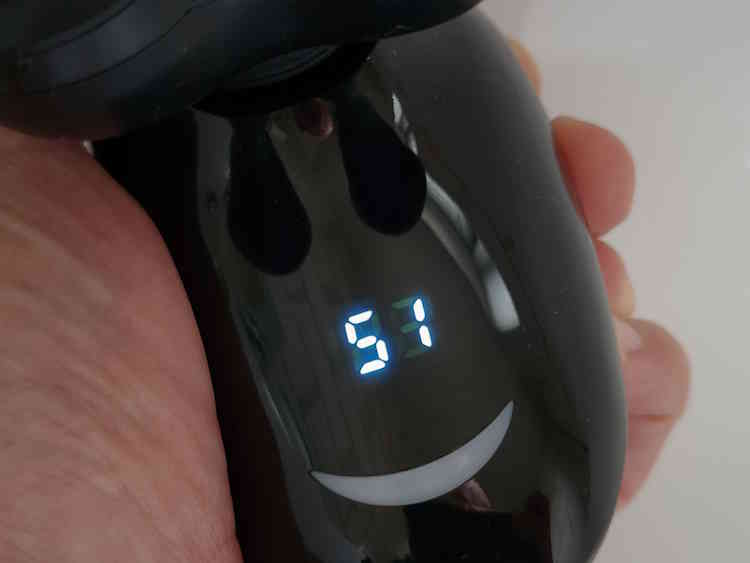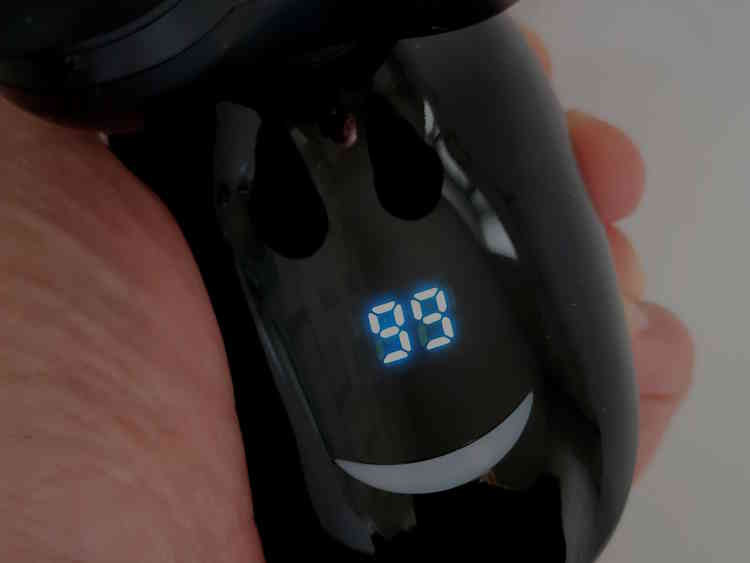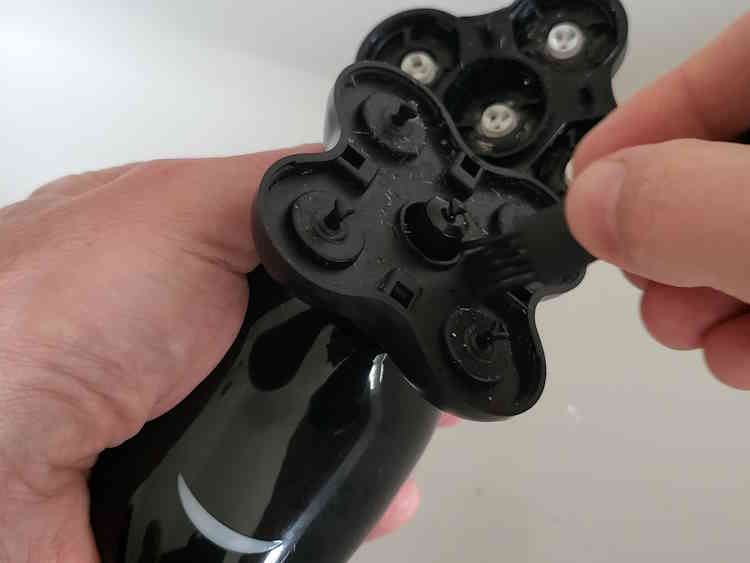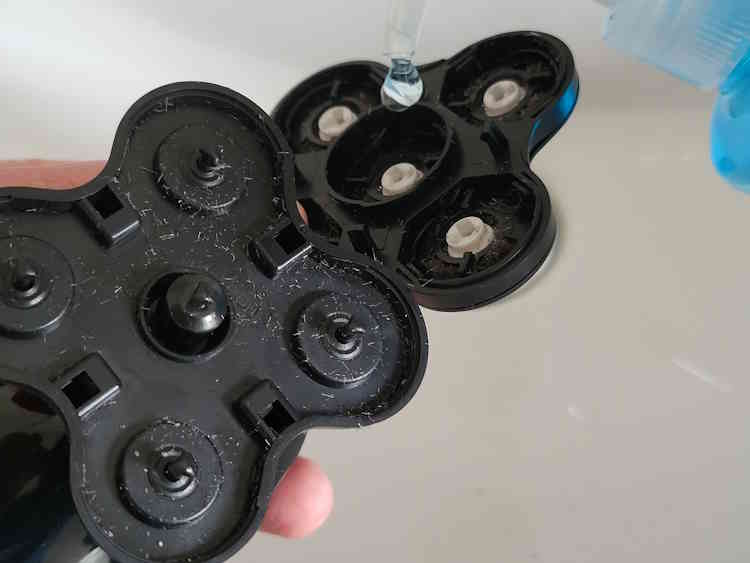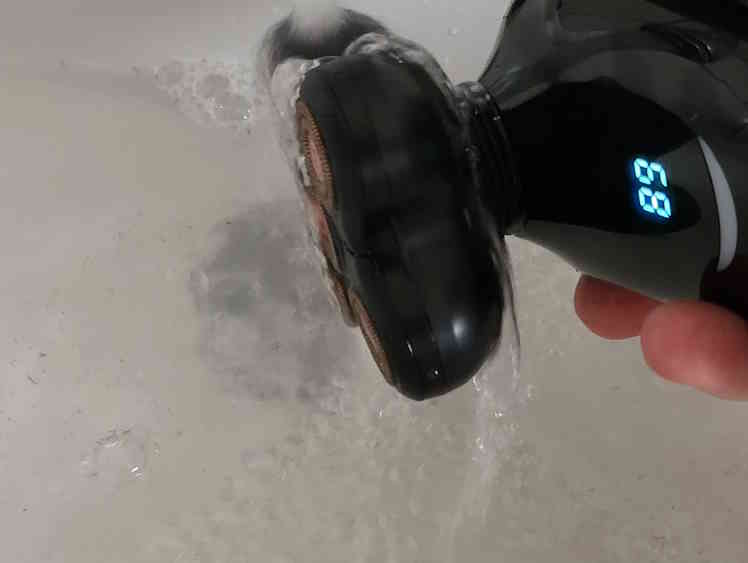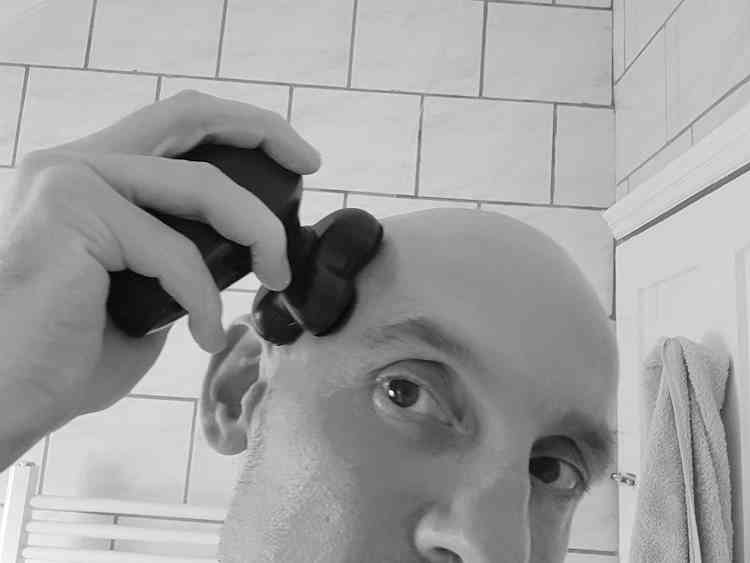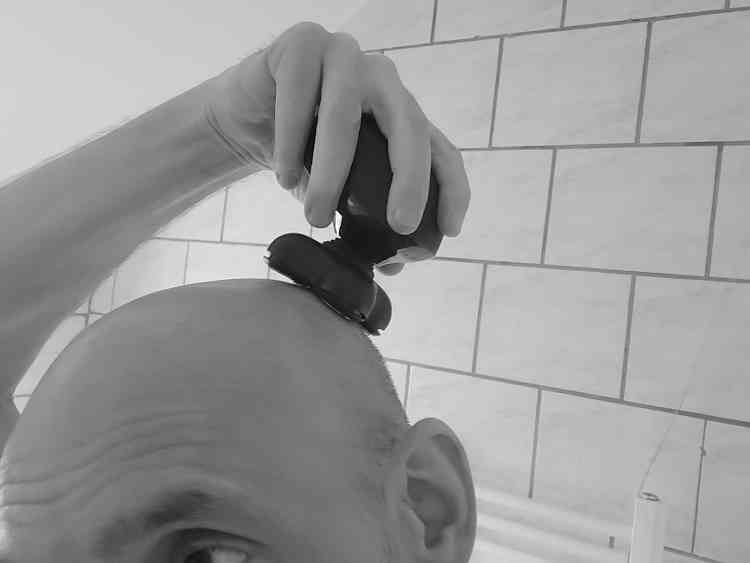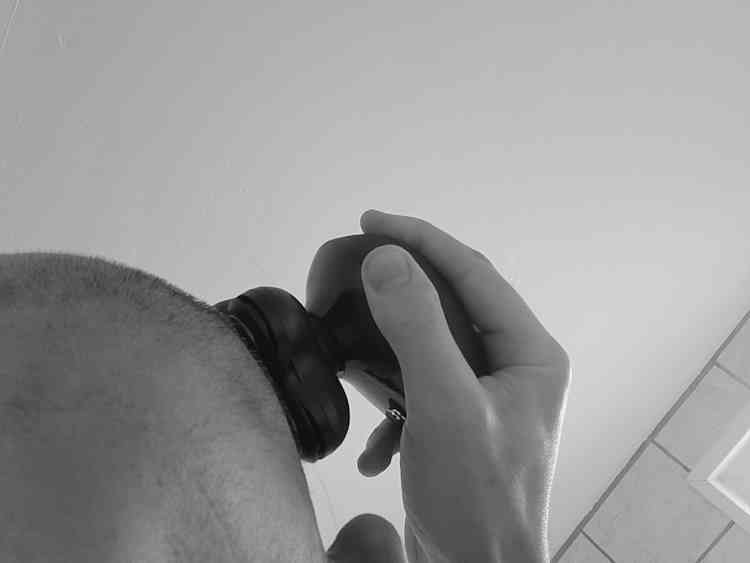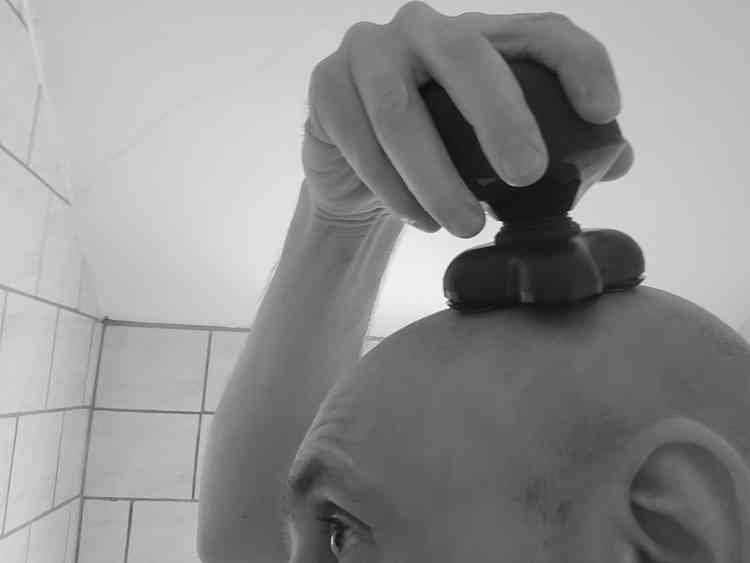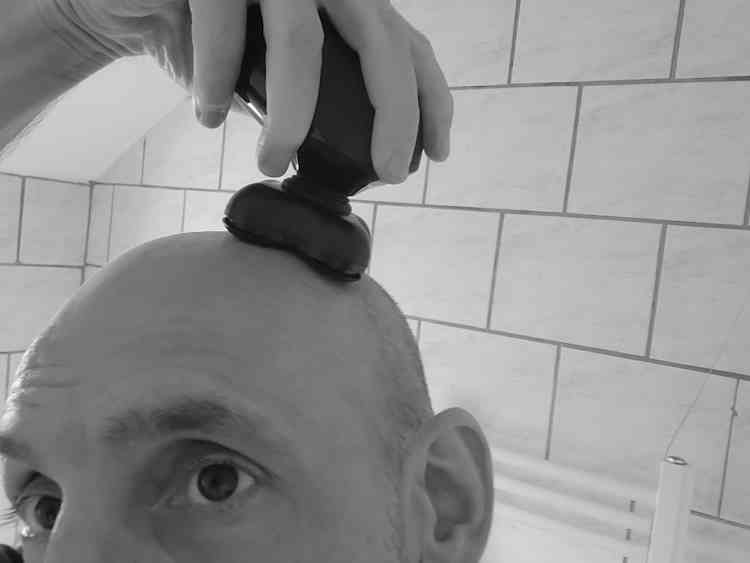Brio Raze Head Shaver Review – Would I Recommend It?
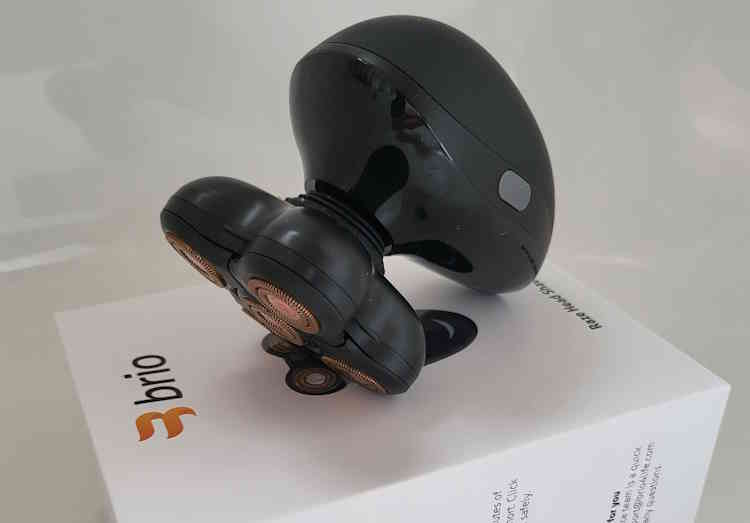
A dedicated electric head shaver I saw cropping up in YouTube videos and other sources was the Brio Raze Head Shaver. So, of course, I got myself one to test, use and review.
I’ve been busy with electric head shaver reviews recently and got stuck into a few, like the Remington Balder Boss (Remington RX7 outside the US) and MicroTouch Titanium–not only on the website but on the Shaving Advisor YouTube channel.
I put all this effort into finding you guys the best electric head shavers dedicated to head shaving and providing honest, experience-based reviews and comparisons. Plus, I enjoy the whole process, and having a balding head helps!
This Brio Raze has gotten a lot of attention and even came up as one of the best head shavers (Wow, could it really be?). I thought something was shady about all this, or rather, not very accurate, which is a better way of putting it. The short answer is that it proved to underperform and was a rough shave, but more about that in review (you might as well get the whole story).
In this review, I will discuss what I like and dislike about the features and design, share its performance after shaving, and suggest who it might be best suited for in the final thoughts.
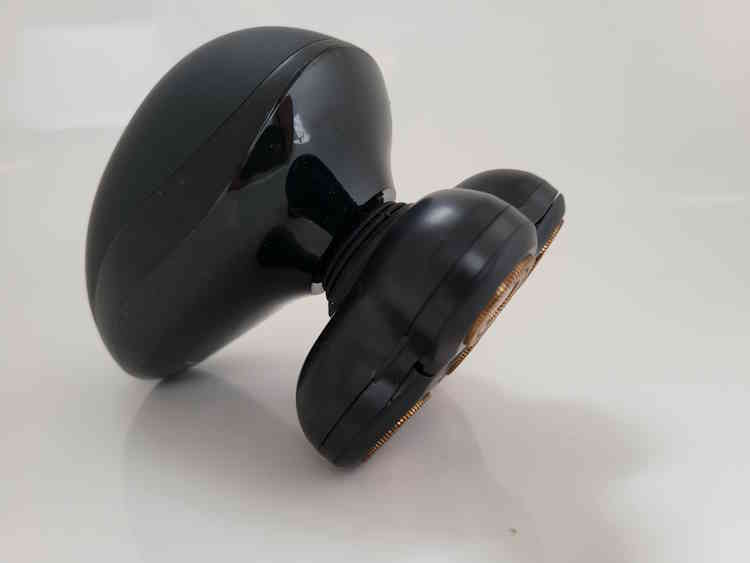
Video Review
If you are a visual type of guy or find you need other visual stuff that can help you decide if the Raze is worth further investigation on your buying journey, then this video should be helpful.
Description & Features
Unboxed, we get the shaver, blade cap cover, cleaning brush, USB cord (no plug), and a small instruction manual.
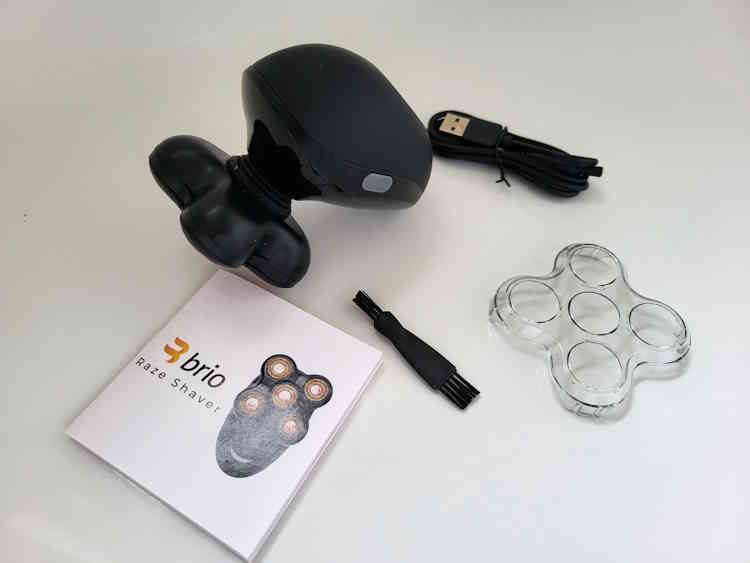
- Handle/Body—The shaver’s body is slim, rounded, and ergonomically friendly. The matte-finished top section should provide a non-slip grip when shaving.
- Blades and Blade Head—The shaver has 5 rotary titanium-coated blades that flex. The neck and head section moves in various directions when in use.
- Power Settings–The shaver has a standard and higher powered setting.
- Cordless and Cord Operation – The shaver is rechargeable and can be used cordless. It can also be operated when on charge.
- Charging and Battery—Brio states that the battery takes 5 hours to fully charge and will provide 100 minutes of runtime. They also state that a 1 hour charge will provide 60 minutes of runtime.
- Wet and Dry – The shaver is waterproof and can be used to shave wet with shaving lubricants.
- Light Indicators—The LED screen shows which power setting you are using and the amount of battery charge left in minutes.Numbers 1 -3 show when using the travel lock.
- Travel Lock–Holding the power button for about 4 seconds will lock the shaver and prevent it from accidentally switching on in transit. Hold the button for 4 seconds to switch it back on.
- Replacement Blades – The shaver head with blades should be replaced every 12 months, according to Brio.
- Warranty – Brio offers a substantial warranty period of 2 years.
More About The Features — Pros and Cons
The above covers the basics of the features of the Brio Raze Head Shaver. However, I will add more detail–and, importantly, the pros and cons of these features based on experience and using it.
The blades look good! However, looks can be deceiving.
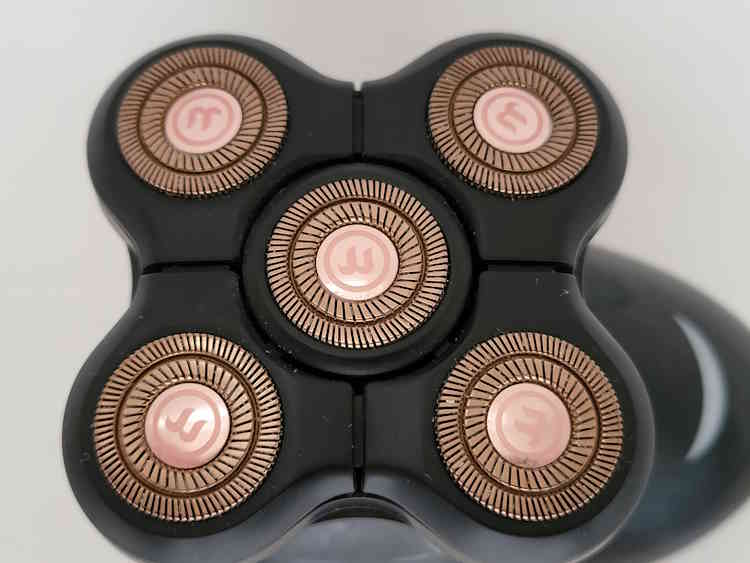
Build Quality & Ergonomics
While it looks plasticky, it generally feels solid enough when compared with other head shavers. However, I do feel like the joining section between the matte finish top and bottom section could be designed in a manner that where we would not feel the overlap (I guess that is me being quite critical, though–although I dont see this issue with the Remingtons and others).
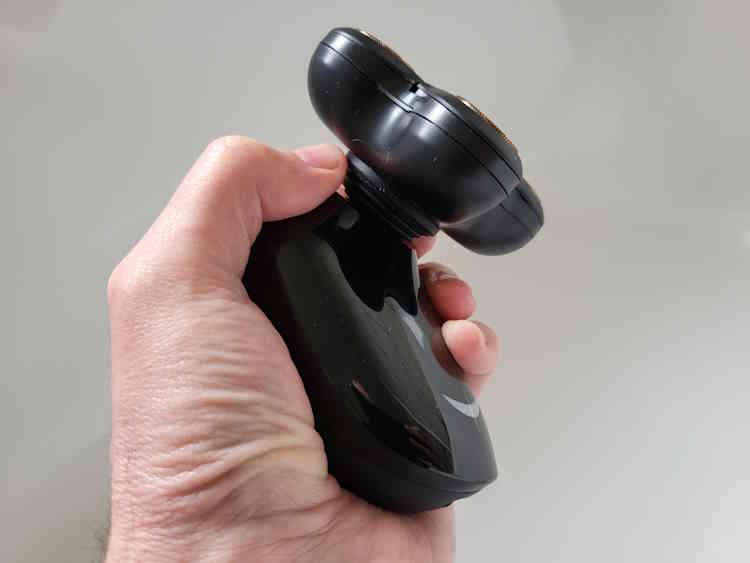
It fits well in the palm of the hand, which makes it ergonomically friendly for head shaving.
The matte finish top does offer some grip. However, the thumb, when using it (placed on the underside) feels like it should have grip rather than the shiny plastic section. The shaver does not slip when I am using it–but I just notice these feature details.
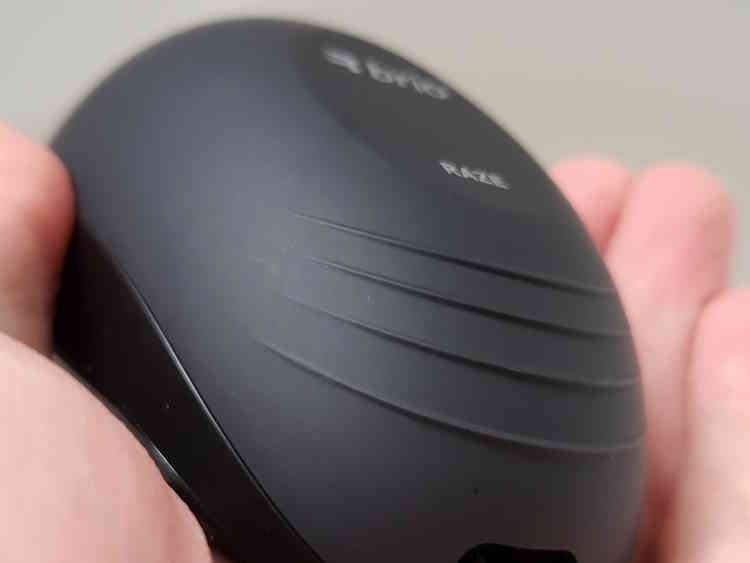
I will mention that I am not a fan of the power button being placed at the side where the thumb is also placed while it is in use. I have not switched it off while using it as yet (accidentally), but I can’t see why they would put it in there rather than on the underside. The button could also be rubberized and not look so tacky!
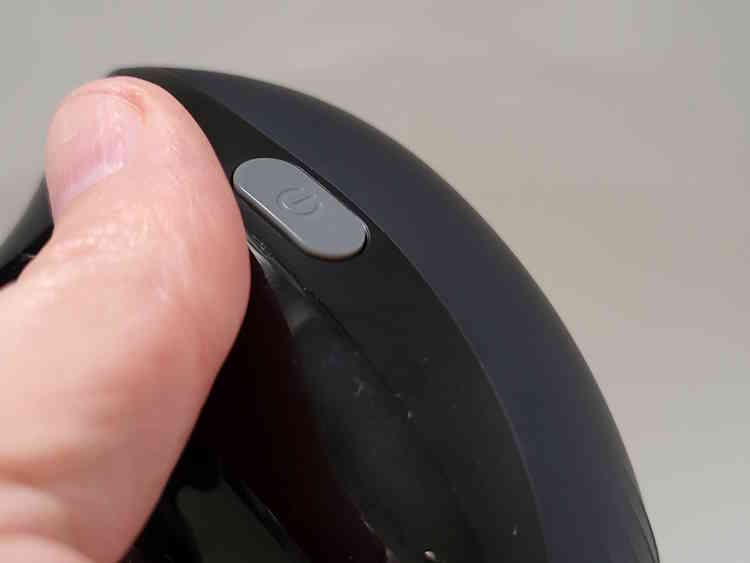
Another possible design issue I noticed. The head (not the blade section) is not removable. You’ll see on most other head shavers that the whole head can be detached (see Remington image below), and then the blade section can also be detached. I’m not sure this makes a lot of difference in terms of cleaning or anything else. Still, I do prefer to have that option others offer (it could be that I have just become normalized to this design feature that offers little benefit).
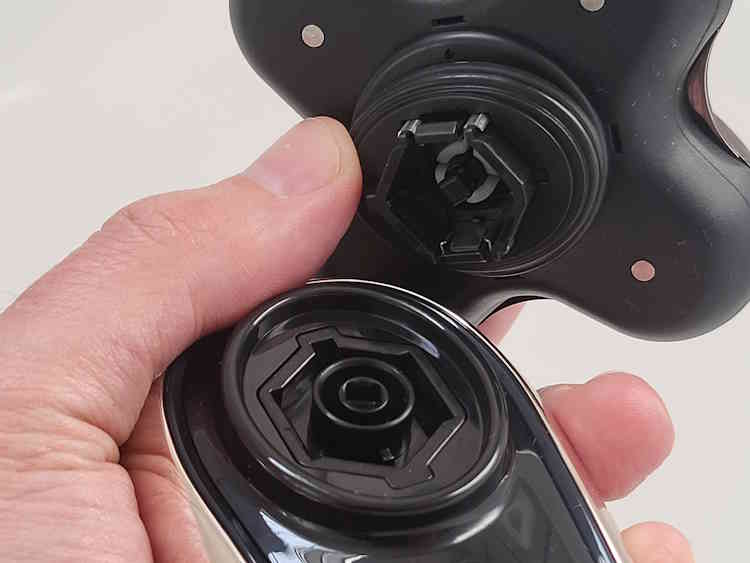
Blades and Head
The 5 rotary blades flex in and out together when shaving along the various contours of the head. Each blade does not flex independently as they do on the Skull Shaver brand shavers or the MicroTouch Titanium, and this feature does provide more comfort and the ability to shave along various contours.
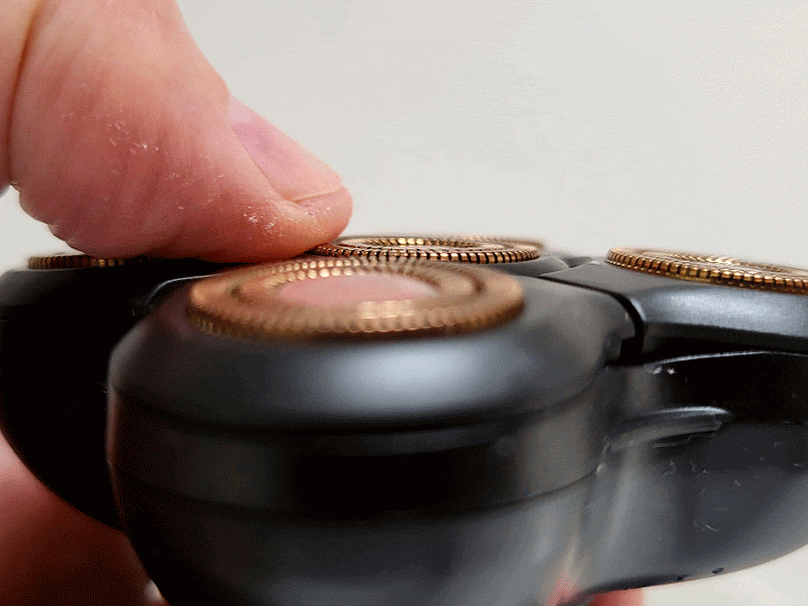
Brio states the blades are titanium coated, which should provide additional comfort. However, as you will see when I go into detail about the head shave below, comfort was not great!
The head section can also move in various directions and kind of pivots from the neck of the head shaver. This is a useful feature that enables the shaver to move along the various contours of the head.
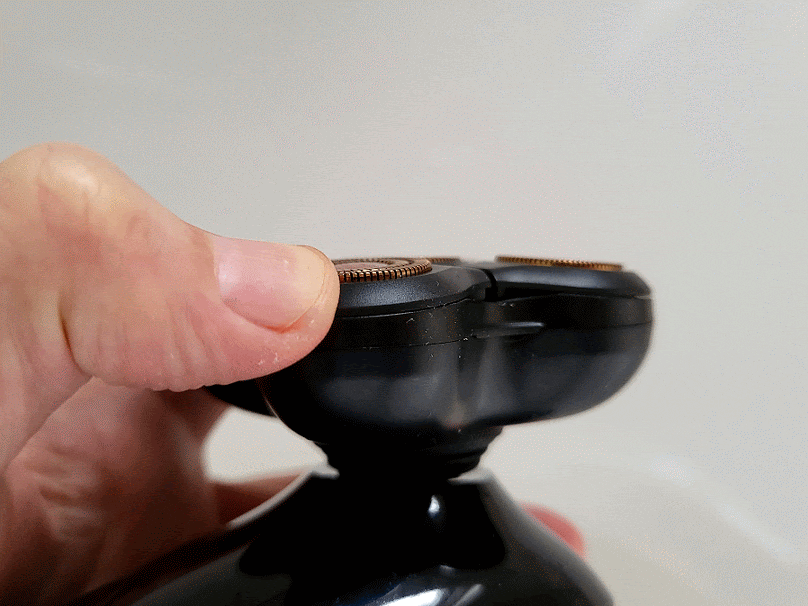
The shaver comes with a blade cap cover to protect the blades when it is not in use, which I find useful.
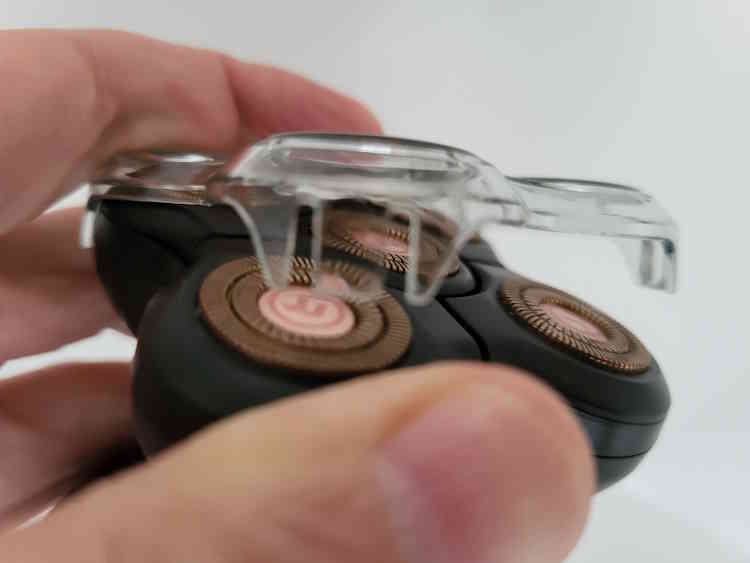
Two Power Modes
The Brio Raze offers two power modes that are similar to the Remington Balder Boss (which provides what they call a turbo mode). You have to switch the same button twice to increase the power mode and press it again to bring it back to standard mode.
While an extra power mode or turbo seems attractive on paper or for marketing purposes, I fail to need two modes. I am happy with the fastest mode, and that’s it. Maybe some users can benefit from saving battery runtime when using the standard mode (shaving daily comes to mind as less hair requires shaving).
Light Indicators
The LED panel that shows how much battery charge is left is very useful. It displays the charge left in minutes, which I find useful. I did actually time it, and it was reasonably accurate.
The 51 and 52 on the screen confused me at first until I read the manual that comes with the kit. The 51 and 52 are actually S1 and S2, which are for the two power (speed means ‘S’ I guess) modes.
Hair Collection Chamber
The Brio raze, like the Remington and Skull Shaver heads shavers, has a collection chamber. This area underneath the blades collects debris, and I find it very useful in terms of preventing the blades from clogging up.
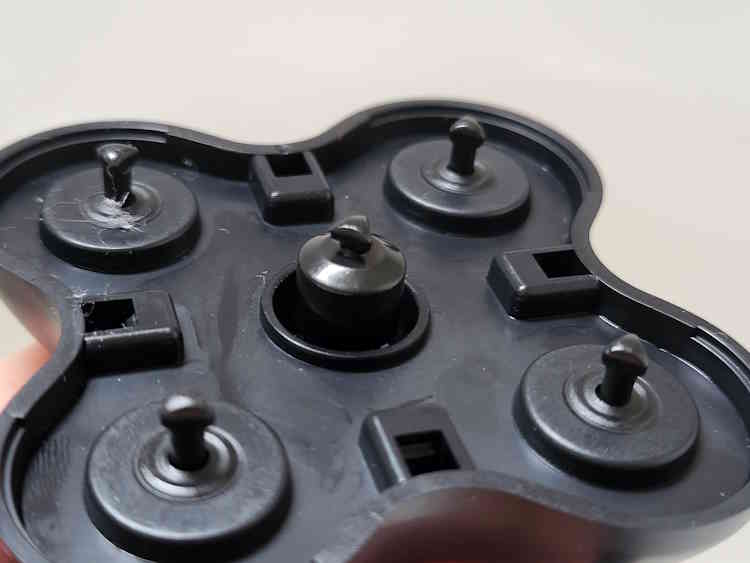
Not all head shavers have this feature, so it’s good to see Brio has added this.
Charging and Battery Life
The 100 minutes of runtime is quite generous when comparing the Raze with other head shavers. It does take 5 hours to fully charge, but it can also be charged for an hour, which will provide enough minutes of runtime (Brio states 60 minutes).
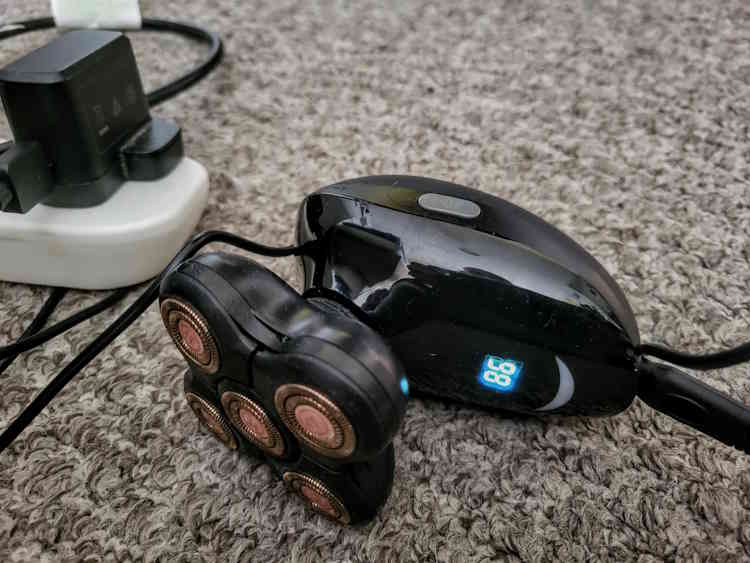
A lot of head shavers and some facial electric shavers do have issues with battery longevity. At the moment, I cannot measure the longevity as I have not owned and used it long enough. You want at least 3 years out of the battery.
The shaver can also be used corded, which can be useful if the battery isn’t holding its charge.
We only get a USB cord with the shaver and have to use or buy our own adapter. We should use a 1 amp 5-volt adapter with the cord, as higher may damage the shaver.
Cleaning & Maintenance
Just like any of the other head shavers I have used, the Raze is easy enough to clean up. I blew out what I could and brushed out as much debris as possible, and I found the collection chamber did collect the debris.
After brushing and blowing, I added a blob of anti-bacterial hand soap before rinsing under the tap with the shaver switched on. I then swilled the blade head and chamber with the blade detached.
All this was done easily enough.
For every few shaves, or even monthly, you can add a spot of oil on each rotary blade to help maintain them.
Brio states the blades only require replacing every 12 months, and I like this. The reason I like it is that so many companies are claiming blades only last 3 months and then try to sign you up for regular replacements when an electric shaver for facial shaving usually lasts for 12 – 18 months, and most men’s head hair is softer (should create less wear–but more area to cover).
Head Shaving Experiences
All was going pretty well with the features until the most important aspect of having to meet my balding head and shave it comfortably and efficiently.
I did my usual first shave after trimming the hair down with hair clippers. Keep the hair nice and short–not make the blades work harder than they need to kind of thing.
It was not comfortable at all, and it was a rough shave compared to other head shavers I have used. I tried it up to five times, and every time, it just felt rough.
I could hear the speed of the shaver and cutters going, which showed that it had power. However, the end result (closeness of shave) was not as good as the last five head shavers or more that I have tested and reviewed. After the shaves, I could feel the stubble around the hairline, so I took a Remington Balder Boss and Skull Shaver Pitbull Gold to these areas, and they both cleaned it up.
I did also try wet shaving with a light coating of shaving cream. Surprisingly, it was just as uncomfortable and rough, and usually, wet shaving with an electric is more comfortable.

These blades are supposed to be titanium coated, which would provide some added comfort, but I did not experience that comfort.
The bottom line is I have used a bunch of head shavers that are more comfortable and provide a closer shave, unfortunately.
Value for Money
The Brio Raze is priced at around $70 USD, which is a slightly higher price than many other head shavers. It costs less than the Pitbull Gold and Silver, but more than the Skull Shaver Palm and slightly more than the Remington Balder Pro.
I would say it’s a $50 shaver (max), but as it lacks performance, it makes $50 even too much.
Replacement blades cost around $25 USD, which is about normal for replacement heads that have blades.
Final Thoughts – Verdict (Who’s It For?)
It was all going quite well; the Raze had a few nice features, even if I prefer the shape and grip of some other head shavers. However, it was not a very comfortable experience, and as mentioned, I proved other head shavers shaved closer.
I can’t recommend this shaver to anybody. There are better head shavers available, which you’ll find on my best head shavers roundup page.
You can also check out my YouTube channel of head shaver reviews that should help influence your electric head shaver buyer experince.
So, as the title of this review asks, ‘Would I Recommended It? It’s a nope from me!
